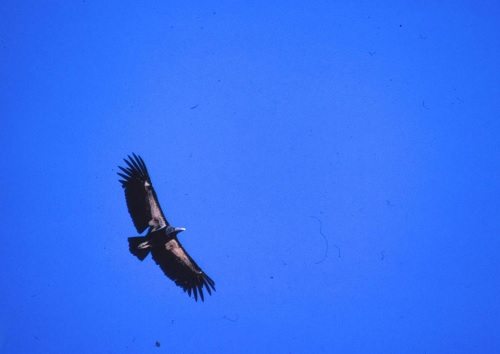 In 1985,we first saw Marty McFly zooming Back to the Future to make sure he and his family didn’t disappear. Also in 1985, our biologists were capturing California condors in an effort to make sure the species didn’t disappear. Between 1983 and 1987, the Service-led California Condor Recovery Program captured 22 California condors — were only ones left in the wild anywhere on Earth.
In 1985,we first saw Marty McFly zooming Back to the Future to make sure he and his family didn’t disappear. Also in 1985, our biologists were capturing California condors in an effort to make sure the species didn’t disappear. Between 1983 and 1987, the Service-led California Condor Recovery Program captured 22 California condors — were only ones left in the wild anywhere on Earth.

The goal was to breed the birds in captivity and release them back into the wild.
MORE: Find photos and video interviews
On August 7, 1985, our biologists captured 5-year-old male California condor AC-4 at Bitter Creek National Wildlife Refuge in Kern County, California. AC-4 turned out to be integral to the recovery of the California condor population. He successfully sired 30 chicks that have been released into the wild population — the third most productive sire in the program. He was also part of the pair that produced the first egg and first chick from wild birds in captivity in 1988.
Fast forward to December 29, 2015, 35-year-old AC-4, re-branded as California condor number 20, was released in the same area where he was captured. He is one of four remaining condors of the original 22 birds brought into captivity in the 1980s. Condors can live to 60.
“Watching this California condor, who has been so instrumental to recovery of his species, rejoin the wild flock, is an emotional and historic moment,” says Joseph Brandt, our lead condor biologist. “It’s like seeing him come full circle.”
Since 1992, when the Service began reintroducing captive-bred condors to the wild, the population has grown to about 420 birds.
In 2008, the Recovery Program reached an important milestone, with more California condors flying free in the wild than in captivity for the first time since the program began.
That’s a pretty impressive rebound – they didn’t even use a time-traveling Delorean.
— Matt Trott, External Affairs, USFW – http://www.fws.gov/
